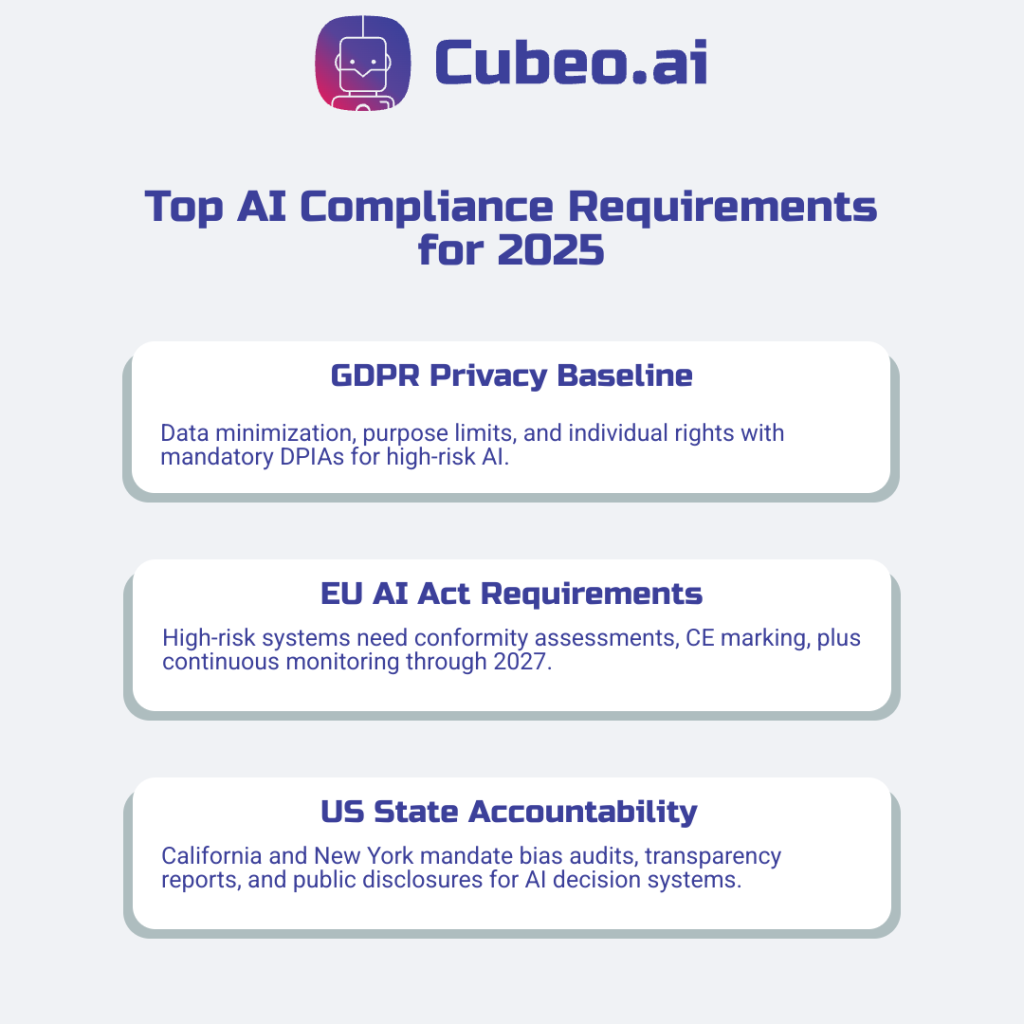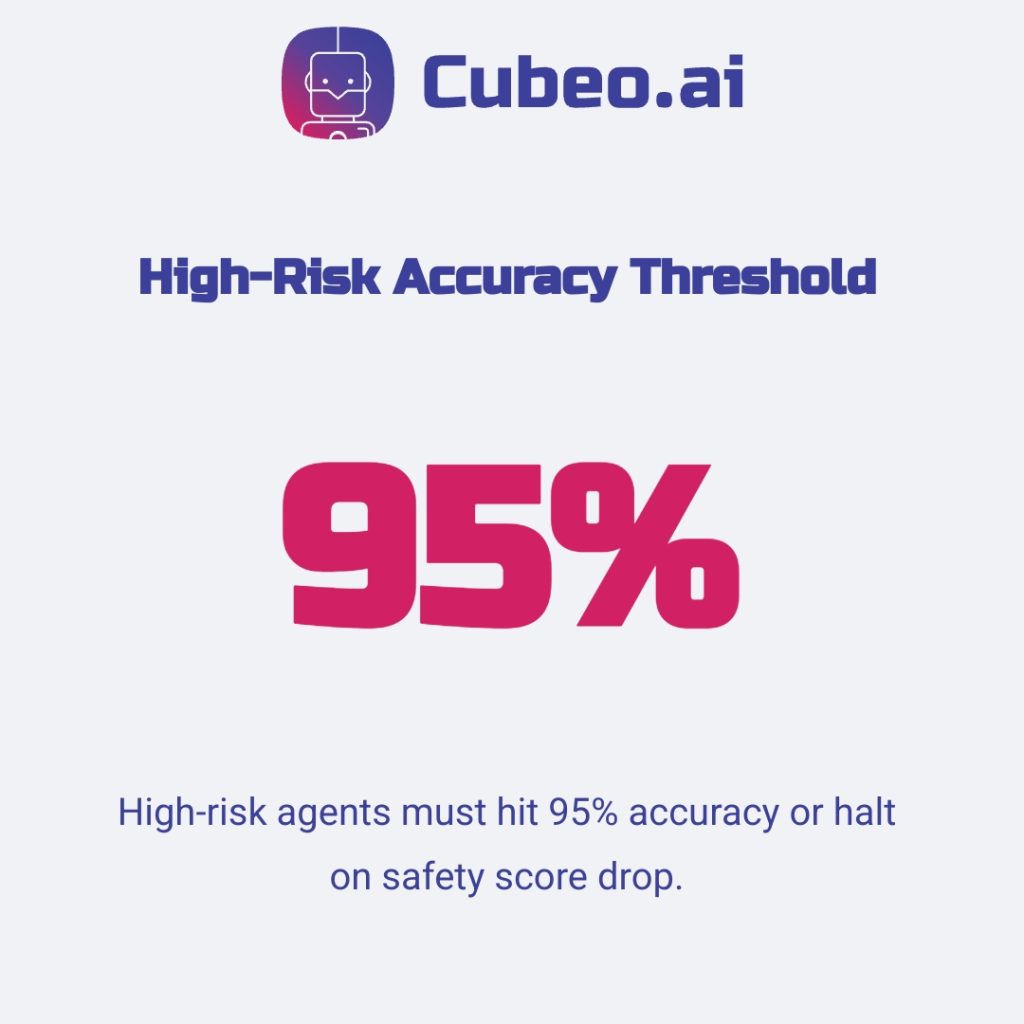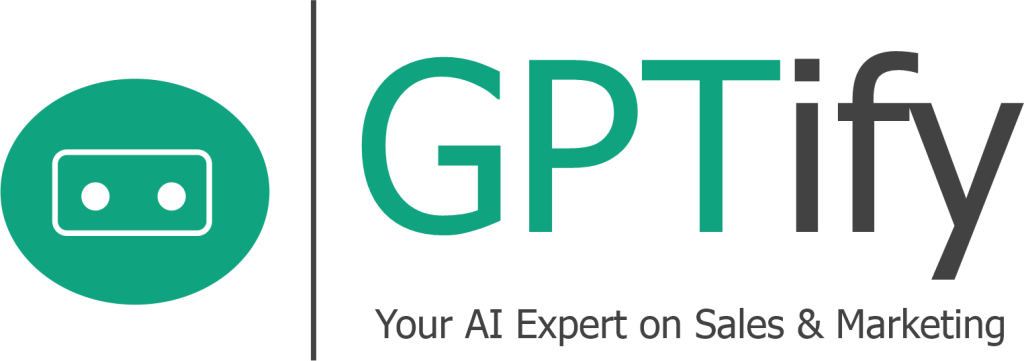If you operate AI agents in production, 2025 rules change how you must log, test, and prove safety.
Teams that embed classification systems, testing protocols, and audit trails into their development workflow move faster than those treating compliance as a separate process. Privacy-by-design (building data protection into systems from the start) becomes an operational advantage when your agents automatically generate the documentation auditors expect.
Each section provides actionable frameworks transforming regulatory complexity into deployable controls and workflows.
Global AI Laws and Privacy Baselines
Operating AI agents across multiple jurisdictions means navigating overlapping legal frameworks that each demand different controls. The global AI legislation tracker shows over half of US states have enacted AI accountability laws, while the EU AI Act creates risk-based compliance tiers. Here’s your obligations matrix:
Quick Reference Matrix:
- EU/GDPR → DPIA + purpose limitation
- EU AI Act (high-risk) → conformity assessment + CE-style documentation
- US states (CA/NY) → bias audits + transparency reports
GDPR Privacy Baseline for AI Systems
GDPR remains the baseline when your agent touches personal data. Focus on three controls:
- Data minimization: Collect only fields needed for the task. Sentiment analysis shouldn’t pull contact info.
- Purpose limitation: Don’t repurpose training data. Fraud data can’t be reused for profiling without consent.
- Individual rights: Provide clear DSAR paths and meaningful human review when automated decisions materially affect people.
Make DPIAs mandatory for high-risk agent processing. Record inputs, decision logic, and safeguards (access controls, retention limits, anonymization). Store the DPIA with the agent’s documentation for audit.
EU AI Act Risk Categories and Requirements
The EU AI Act regulatory framework defines four risk levels that determine your compliance obligations.
High-risk AI systems require conformity assessments (think vehicle inspections), CE marking, and continuous monitoring. This includes credit scoring, recruitment tools, and biometric identification systems.
Foundation models with significant computational resources face transparency obligations and systemic risk assessments. Understanding what is generative AI helps clarify why regulators focus on these capabilities.
Prohibited practices include social scoring, emotion recognition in workplaces, and AI systems that exploit vulnerabilities.
US State Laws and Emerging Requirements
California and New York lead algorithmic accountability requirements. These laws mandate bias audits for hiring and housing algorithms, plus transparency reports for automated decision systems.
Key emerging patterns include algorithmic impact assessments, fairness testing requirements, and public disclosure obligations for government AI use.
The next section maps these obligations to NIST framework controls you can implement.

Safety Laws and Governance Controls for Agent Operations
Governance controls transform from compliance overhead into competitive advantage when embedded correctly. Teams with structured agent governance deploy faster, pass audits smoother, and catch issues before they become incidents.
The NIST AI Risk Management Framework provides the operational structure most enterprises adopt for AI governance. Combined with practical red-teaming protocols, these controls create the safety foundation your agents need for production deployment.
NIST AI Risk Management Framework Mapping
The NIST AI RMF maps to your agent lifecycle across 4 functions:
- Govern: Establish policies, roles, and approvals. Assign a product owner or security lead as the risk champion for each agent deployment.
- Map: Document agent context using templates. Record what data your agent accesses, what decisions it makes, and who gets affected. Different agent types require different mapping approaches.
- Measure: Define safety metrics (accuracy, bias delta, safety score) and thresholds that trigger human review. Example starter thresholds: Low risk agents get weekly smoke tests; medium risk agents need daily drift checks and 1% bias delta triggers; high risk agents require ≥95% accuracy or immediate stop-deploy on safety score drops.
- Manage: Enforce lifecycle gates with evidence: intake form, red-team pass certificate, policy signoff document, and scheduled recertification. Store each gate’s artifacts in your agent registry.
Red Teaming and Safety Evaluations
Red-team checklist:
- Prompt-injection test — crafted exploit inputs + response logs
- Data-leak/model-inversion test — attempts to reconstruct training rows; capture outputs
- Safety-guard bypass — solicit forbidden outputs and log failures
- Access control checks — validate role enforcement and escalation paths
- Drift/stress tests — synthetic inputs to detect performance loss
Record test artifacts, remediation steps, and verification evidence for audit.
Run continuous testing protocols mapped to MITRE ATLAS (LLM threat catalog) and OWASP LLM Top 10 (common LLM vulnerabilities). Test for model inversion attacks (attempts to reconstruct training data) and document results.
Documentation and Transparency Requirements
Model cards serve as nutrition labels for your AI systems: document data sources, intended use, limitations, and evaluation metrics. Store system specifications (architecture, access controls, human oversight points) with agent configurations for audit access. Log prompts, tool calls, safety scores, approvals, and human-in-the-loop actions so auditors can reconstruct decisions. Next: implement these controls in a no-code agent workflow that emits audit evidence.

Taking Action on AI Compliance in 2025
Proactive compliance is urgent: 77% of companies rank AI compliance as a top priority, yet only 4% have cross-functional teams ready.
Make compliance operational. That’s your competitive advantage.



